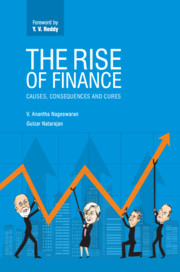6 - The Way Forward
from Part C - The Cure
Published online by Cambridge University Press: 02 May 2019
Summary
Treating the disease at its roots
This is the third and final part of the book where we discuss the cures to the ‘Rise of Finance’. To cure something, one has to establish that what we are attempting to cure is a disease. We hope we have done that at least adequately in the first two parts of the book. Now is the time to propose remedies.
As we write this in 2018, the world is approaching the tenth anniversary of the peak of the financial crisis that culminated in the collapse of Lehman Brothers in September 2008. Financial crises are acute events whereas financialization is a chronic condition. In that sense, the world remains as unsafe as it was before the crisis of 2008. Much work has been done but, equally, much remains to be done.
Many proposals have been put forward for making the world's banking system safer in the aftermath of the crisis of 2008. Several of those proposals are in different stages of implementation. Some are facing resistance and delays. The process of approvals of banks’ living wills that outline how they should be wound up in the event of failure is inordinately delayed. There are also proposals for banks to pay into an insurance fund that could be used to bail them out in case of failure. Banks are expected to create contingent capital to deal with capital shortage during liquidity and solvency crises. Risk-weighted capital adequacy ratios for banks are expected to go up gradually in the coming years in accordance with the Basel III commitments.
Then, there are counter-cyclical capital buffers that are activated during excess credit growth and deactivated during credit downturns. Each national central bank sets the parameters with regard to local circumstances. Banks undergo regular stress tests. Banks are restricted from undertaking proprietary trading with depositors’ money (‘Volcker Rule’). Central banks name certain institutions as systemically important financial institutions (SIFIs) and subject them to extensive monitoring. Of course, far from making these institutions behave more responsibly, this might make them take on more risks as they are systemically important and cannot be allowed to fail!
- Type
- Chapter
- Information
- The Rise of FinanceCauses, Consequences and Cures, pp. 151 - 206Publisher: Cambridge University PressPrint publication year: 2019



